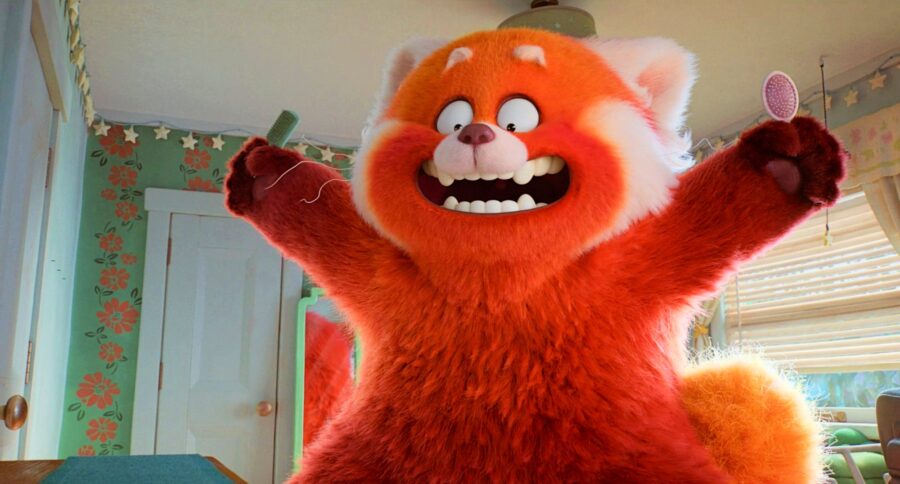A Controversial Pixar Movie Is Climbing The Streaming Charts
Turning Red is in Disney+'s streaming top ten.
This article is more than 2 years old

The pandemic forced everyone to figure out new ways to live and approach our daily lives and included in that was the entertainment industry, which had to find ways to continue producing and delivering content. One of the ways that Disney approached this was to release content in unconventional ways with theatrical runs mixed with earlier than-normal streaming releases, as they did with the simultaneous release of Scarlett Johansson’s solo outing for her Marvel Cinematic Universe character, Black Widow. According to Flix Patrol, another film that suffered from an unconventional release, Pixar’s Turning Red, is now seeing a new life on the streaming platform as it has solidified itself in the top ten.
While Disney+ is enjoying a lot of streaming numbers thanks to the red-hot Pedro Pascal returning to the armor for the third season of The Mandalorian, it is also seeing an influx of past films filling its top ten movies. The top five films in its top ten list include Moana (2016), Encanto (2021), Toy Story (1995), Zootopia (2016), and Cars (2006). Turning Red comes in at number eight today, down from March 18th number three but up from yesterday’s number ten.
Turning Red may have been a film that the critics praised by giving it a 95 percent on Rotten Tomatoes and calling it heartwarming and beautiful, but it wasn’t a film that coasted to animated success like most Pixar films. Instead, it suffered from a financial disappointment that brought in a meager $20 million return on the investment of a $175 million budget. Of course, while that is typically indicative of a massive flop, it isn’t unsurprising as it went straight to streaming, which undercut its ability to pull in big box office numbers.
Another reason the film struggled was due to controversy and backlash from specific demographics due to the subject matter of the film, which was a little more mature than the usual all-ages Pixar films. With films like the Toy Story franchise, Finding Nemo, Inside Out, and Up, parents can often simply take their children to the movies without thinking about the content, but with Turning Red exploring a more coming-of-age subject matter and delving into puberty, parents were caught off guard and let the studio know. That didn’t hurt the audience score enough to cause it to become a rotten-rated film, but it dropped it from a full 25% from the critic review.

One of the common criticisms of the film is that the subject matter suggests that it is ok to be rude and rebellious to your parents as long as you are an adolescent going through puberty. While this is most likely not the goal of Pixar to turn your children against you in the spirit of learning about your body, parents began to rebel against the film and left many negative reviews. If you see the movie with the knowledge that this is meant to allow these children that are going through a change in their bodies and their lives to be seen.
Turning Red follows Mei, a thirteen-year-old who is approaching puberty and deals with her awkward moments in a unique way; when she gets overly emotional, she turns into a giant red panda. One of the things that Turning Red did that other filmmakers should take notes on and approach in a similar way is how they deal with taboo subjects like puberty and periods. The backlash of the audience put on display exactly the problem with the subject matter itself and why it is important; if the young girls who were watching this movie aren’t able to see their subject matter without hearing the backlash surrounding it, then they won’t be able to approach their own puberty without feeling the same shame.
While Turning Red wasn’t a massive hit for Pixar or Disney, the cultural impact that it has and will continue to have on future young girls is enough that the film should get more looks than it does. Of course, the movie will likely not get the Frozen or Avatar treatment with a second run in the theater; it definitely will get some more attention by future audiences. As we get further and further into the streaming services, we can rejoice when we see this film in the top ten where it belongs.












